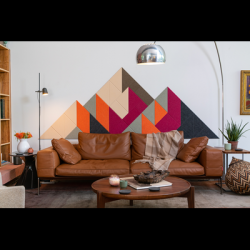By @Good2GoRocknRoll — the amplifier behind the music, exploring rock’s legacy one riff at a time.
By @Good2GoRocknRoll — the amplifier behind the music, exploring rock’s legacy one riff at a time.
Listen and find.
© 2025 Good 2 Go Rock 'N' Roll
Behind the Spotlight: The Unsung Architects of Rock Performance
Stage Lighting & Rock Aesthetics • The Forgotten Roadie • Homemade Instruments
Rock concerts are remembered for riffs, choruses, and iconic performers—yet much of what makes a show memorable happens offstage or out of sight. This article examines three overlooked contributors to rock’s aesthetic: lighting designers who paint music with light, road crews who shaped sound through technical invention, and DIY instrument builders whose handmade tools made records sound distinct. Parenthetical citations are included throughout; full references appear in the Works Cited at the end.
Stage Lighting & Rock Aesthetics: Painting Music with Light
Lighting in rock evolved from practical illumination into an expressive art form that interprets and amplifies music. Designers used color, movement, shadow, and projection to create emotional narratives that paralleled the music’s arc. Psychedelic light shows of the 1960s—like the Joshua Light Show—responded in real time to improvisation, producing a synesthetic experience for audiences (DeRogatis, 2003).
As lighting technology advanced, designers such as Jules Fisher and Marc Brickman adapted theatrical and cinematic techniques for arenas and stadiums, coordinating cues with musical dynamics and using large-scale projection to create immersive narratives (Fisher, 2016; Brickman, 2008). By the 1980s and 1990s, tours such as U2’s Zoo TV integrated light, video, and stagecraft into a cohesive commentary on media and spectacle (Fast, 2005).
“Lighting became a dramaturgical partner to the music—guiding attention, shaping emotional crescendos, and creating iconic stage moments.” (Fisher, 2016)
Key techniques: synchronized cueing, color palettes tied to song sections, projection mapping, and use of shadow to sculpt performers within a stage picture (DeRogatis, 2003; Brickman, 2008).




